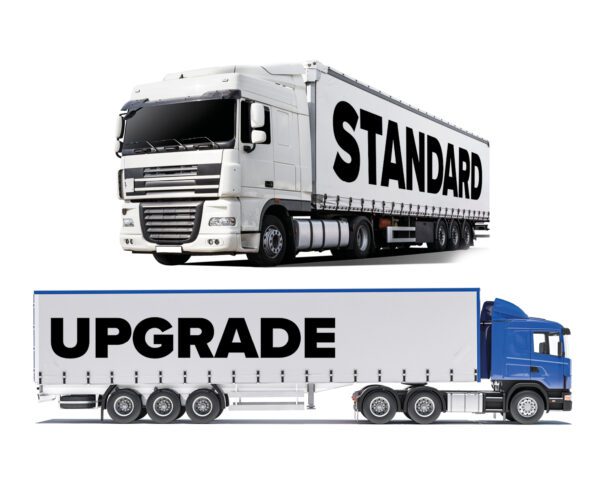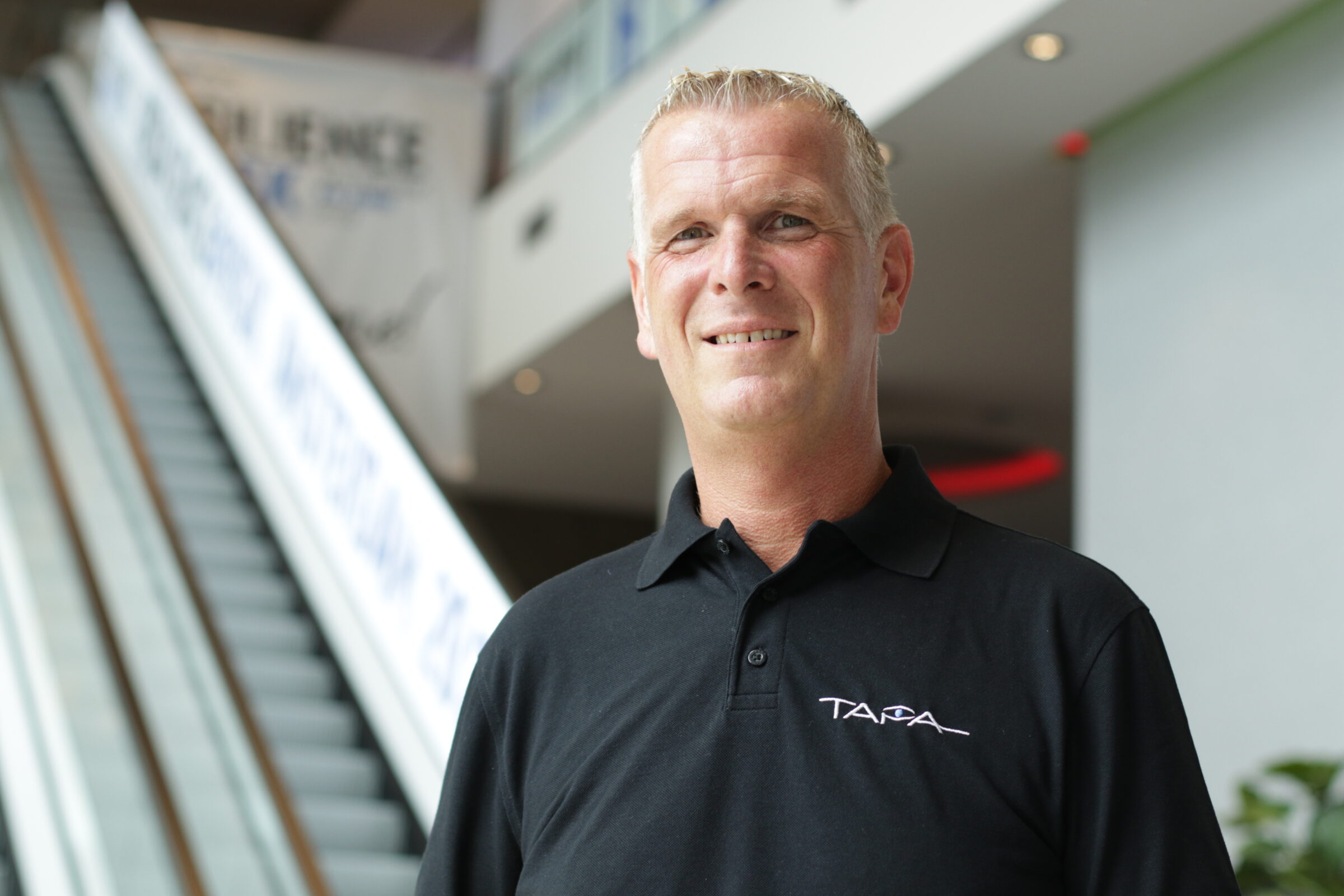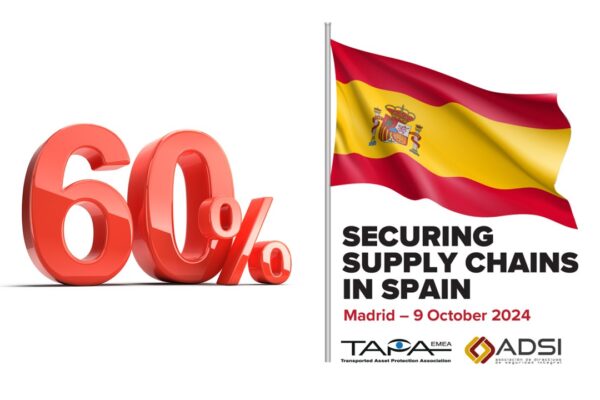
Standard Upgrade
If there were more secure truck parks in the EMEA region, there would be fewer recorded cargo thefts. Who would disagree with this statement?
In the 18 months to the end of June 2022, the TAPA EMEA Intelligence System (TIS) received 1,959 reports of product and/or vehicle thefts involving trucks in unclassified parking locations, notably parking places which offer no means to verify their security levels. This could be a quiet layby near a main road, on a kerbside of an industrial estate, at a motorway service station or even in a truck park which has no certifiable on-site security systems or processes. It is now thought that unsecured parking could feature in over 60% of cargo thefts in the EMEA region….
Three years ago, TAPA EMEA worked with buyers of secure parking places and Parking Place Operators (PPOs) to create a new Parking Security Requirements (PSR) industry Standard. While this is now the most widely-used truck parking Standard in Europe, progress has been arduous but for the support of the more proactive PPOs and parking platforms which instantly saw the value of being TAPA-certified.
Real growth in 2023 and beyond will come from encouraging more parking place owners with existing sites to step up and meet the security requirements of the Association’s Manufacturer/Shipper and Logistics Service Provider members. And, in parallel, TAPA EMEA will be urging members to support those parking sites which do achieve the TAPA Standard because without trucks filling their parking spaces, the whole exercise will be deemed pointless. So, all supply chain security stakeholders must play their part. And, even then, the journey ahead will be long and challenging, but progress is being made.
On 1 January 2023, TAPA EMEA will launch the first revision of its PSR Standard. So, what can you expect? Vigilant spoke to Markus Prinz, the region’s Senior Manager, Standards & Training, to get the latest update…

- What is the status of PSR in terms of the number of sites, total parking places and number of countries with PSR locations?
We currently have:
- Total number of single truck parking places = 9,021
- Total sites = 85
- PSR site certifications = 26
- Partner (PPD) locations = 59
- Total countries = 14
- What are the main changes in the new version of PSR?
The key changes are:
- Adjustments according to, and in line with, the European Commission’s Safe & Secure Truck Parking Areas (SSTPA) Standard
- Freely selectable Enhanced Options to meet SSTPA requirements
- Fencing of the parking area is now required to achieve PSR Level 2
- More value has now been placed on driver comfort, which can be selected as an Enhanced Option
- A comparison and more transparency with the requirements of PSR and the EC SSTPA is now given in one document for the first time
- How much input have PPOs had in the revision?
Of course, we involved our PSR sub-team constantly and in relation to all development steps. We also called upon the specialist knowledge of two leading Parking Place Operators, Ton Barten and Laurie Farmer, who are strong supporters of PSR. It was important to us to ensure any changes did not downgrade the actual security requirements but, at the same time, it was equally essential not to make amendments which required any further investments to meet the PSR Standard.
Therefore, it was usually quite a fine balance to bring the adjustments into line with the SSTPA requirements, but we had the advantage of knowing the certified PPOs were largely already satisfied with the 2018 version of the PSR Standard, so we did not face any major change requests.
- Is PSR in competition with the EC’s SSTPA Standard?
No. We believe all efforts to increase secure truck parking in our region are important and should be welcomed if we are to close the gap between supply and demand. We still see the PSR Standard as closer to the needs of the transport and logistics industry and more practice-oriented, but we also respect the way the European Commission, and the experts which have contributed to SSTPA, have interpreted certain requirements a little differently.
Basically, we all have the same interests. We need more security parking so drivers can take their rest breaks in a safe place without the constant worry of being targeted by criminals and robbed during night or day. That’s exactly why we’ve adjusted the PSR Standard a little, but without losing its aim and focus.
- Is it a simple choice between PSR or SSTPA or can parking places certify to both Standards?
This is exactly what has driven a lot of our focus in the revision; to be able to have two programs certified by our Independent Audit Body partners at the same time and through a single audit. In support of this, we have already trained 12 auditors from two different IABs to qualify them to understand and certify both programs and to also be able to compare them.
In the next step, we will also submit all necessary information, qualifications, and related materials to the EC in order to become an officially listed SSTPA training center.
After that, PPOs can benefit from the added value of receiving two checks and associated certificates directly from one audit. And, furthermore, of course, they have the possibility to ask the EC for appropriate funding for any security measures.
- What is the current shortage of secure parking places in EMEA?
Several figures have been quoted previously but it remains difficult to determine the exact requirement or the full potential for PPOs, but it is clearly substantial given the growing level of awareness of criminal attacks on trucks in unclassified and unsecured parking places, and the major financial and reputational losses they can result in. But how do we define secured parking and connected needs? I don’t think we need the PSR1 or SSTPA Gold & Platinum parking lots in bulk. In combination with TAPA TSR-certified (Trucking Security Requirements) Level 1 & 2 vehicles, I personally see the need for far more parking places in the PSR Level 2 and SSTPA Silver range.
And, especially in the Partner segment, we have also adapted and expanded our TAPA EMEA Intelligence System (TIS) tool in such a way that we have now also taken over the communicated security elements of the Parking Place Declaration form (PPD) of PPO Partners to populate useful parking information into the tool for the benefit of members. Going forward, we also want to offer our Booking Platform Operator (BPO) partners the opportunity to connect an affiliated booking portal into the tool.
- All secure parking is of value, but it’s most important to have secure truck parks on major routes for cargo volumes. How do you achieve this?
This is exactly the goal of the European Commission and the SSTPA program to initiate the creation of secure parking lots on the main traffic routes every 100 km. And this is exactly what the EC will also pay attention to when providing funding within the EU. But there is still a long way to go until then.
- What is TAPA EMEA doing to engage with PPOs and what feedback is TAPA EMEA getting?
In the last 18 months, we have contacted all the PPOs on our unclassified parking site list of around 1,800 locations and received some positive responses and added new classified parking sites in our TIS tool. However, the response was lower than we had hoped. Nevertheless, we are not giving up and, in the next step, we will also contact more parking space booking platforms to exchange ideas on how we can cooperate to add to the positive partnerships we have already established. However, we trust that the synergy with EC SSTPA and the possibility of having both PSR and SSTPA certifications carried out by a single accredited auditor will generate greater interest and lead to more secure parking places in our database.
- Ton Barten stated at the TAPA EMEA conference in November that the fastest growth will come from increasing security at existing truck parks as opposed to certifying new truck parks. Does TAPA EMEA agree?
It is certainly usually easier and more cost efficient to extend an existing parking place than to create a new one. However, this also depends on the conception and the model of the investors and the subsidized locations. Of course, we would like to see many, many more existing PPOs increase their security standards, but with an overall lack of all parking spaces, the existing parking places on the main routes, in Europe especially, are very well-frequented, even without increased security features. As a result, these operators have such a high utilization that additional investments to increase security at their sites are only being considered to a limited extent, although PPOs in more remote locations are increasingly relying on security features to fill their parking spaces and win new customers.
- How can members support the growth of PSR?
The industry or the buyer should bear the cost of safer parking and take this pressure off freight forwarders. I am myself from the logistics sector originally but I was always lucky that my customers never objected to the cost of secure parking to further protect their cargoes as long as we provided a receipt for the secured parking and associated costs. Goods valued in the millions or hundreds of thousands of Euros are regularly transported onboard a single truck, so there should be no shortage of operators ready to pay an overnight or daytime fee for a secure parking space and improved driver safety.
- Are the levels of participation or certification changing with the new revision of PSR?
Nothing changes in principle, other than the opportunity to certify the two main secure parking programs in a single audit. PPOs can still be listed as a PSR Partner in our TIS tool and nothing will change with regard to the free Parking Place Declaration Form (PPD). We are also happy to include parking spaces with a limited number of security elements with the appropriate transparency in our TIS tool. The PSR Levels 1-3 remain unchanged.
- Are all the truck parks in the PSR programme visible in the TIS tool?
Yes, all certified sites as well as PSR Partners are visible with geo-coordinates and map entries.
Security elements are being added by the partners. Interfaces/hyperlinks to booking platforms are being considered.
- What training support is available for PPOs?
We are finalizing the revised training materials for the revision of the Standard and are just about to activate the registration for the first two combined PSR/SSTPA trainings. The first two trainings are virtual sessions on 15 February and 27 April 2023. Here we are talking about a training day followed by an online exam to become a qualified PSR Authorized Auditor and, once we are officially approved, also to become an SSTPA expert. For members, the training courses are still free of charge.
- In which countries is there the greatest need for more secure truck parking?
We would like to see more secure parking places especially across Europe. I particularly see significant need in Germany as a major cargo transit country, but also in France, Spain, Italy as well as Slovakia and the Czech Republic.
- What feedback have you had from PPOs which have adopted PSR already?
Of course, it is always difficult to measure what influence the safety and security elements have on a truck stop/rest area and what percentage now stay overnight solely because of the safety/security on offer. In the case of pure security parking lots or areas without a direct influence from gas stations or service activities, however, the utilization has certainly increased by 30-50% because of the level of demand and but also customer pressure on the industry to use these locations.
- What level of PSR growth is TAPA EMEA aiming for in 2023/2024?
We would like to double the number of classified parking spaces by the end of 2024 and list up to 200 parking locations in our TIS tool by then, so we are aiming to certify a further 26 parking places and to also integrate a further 115 Partners.

















